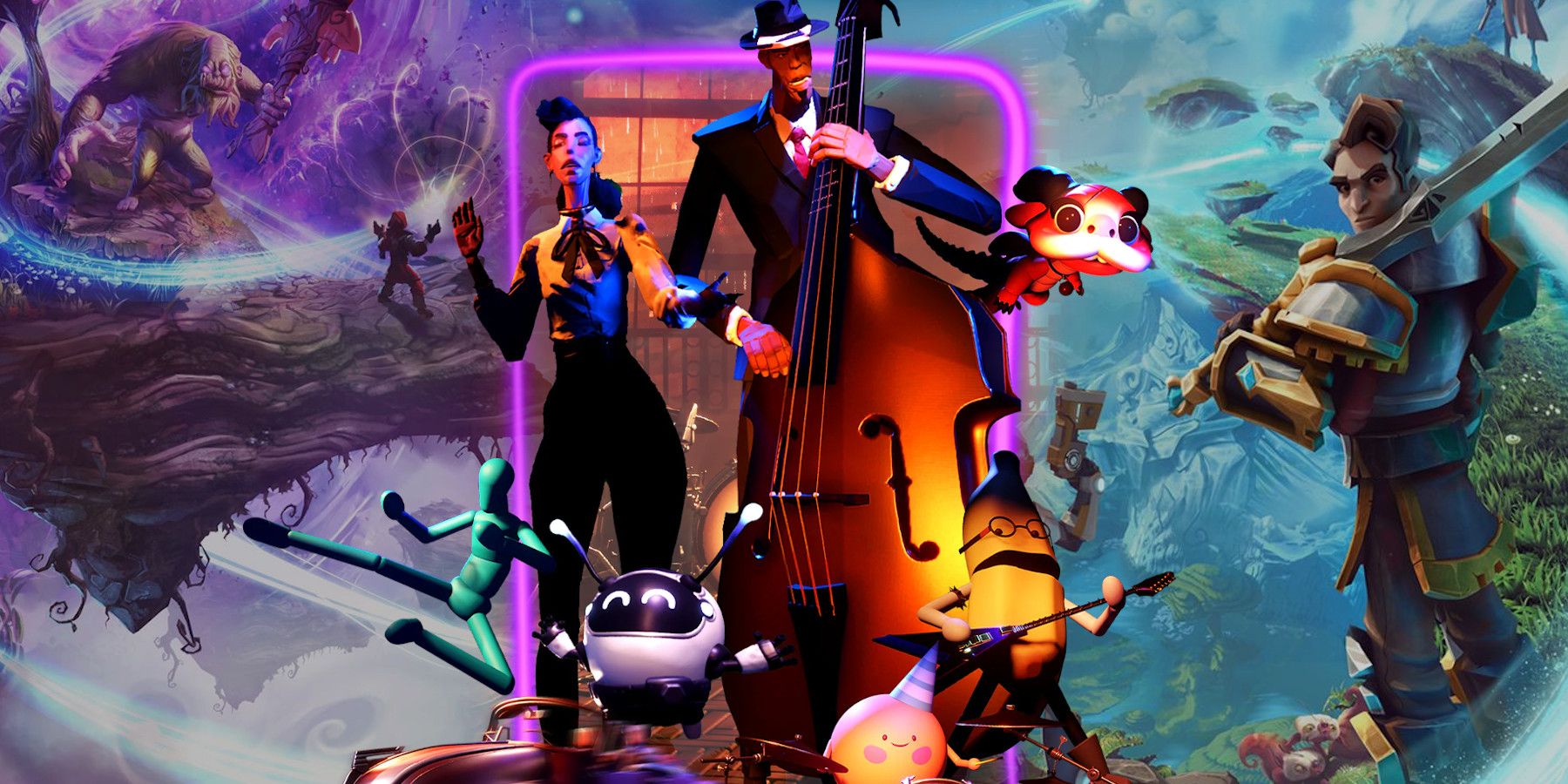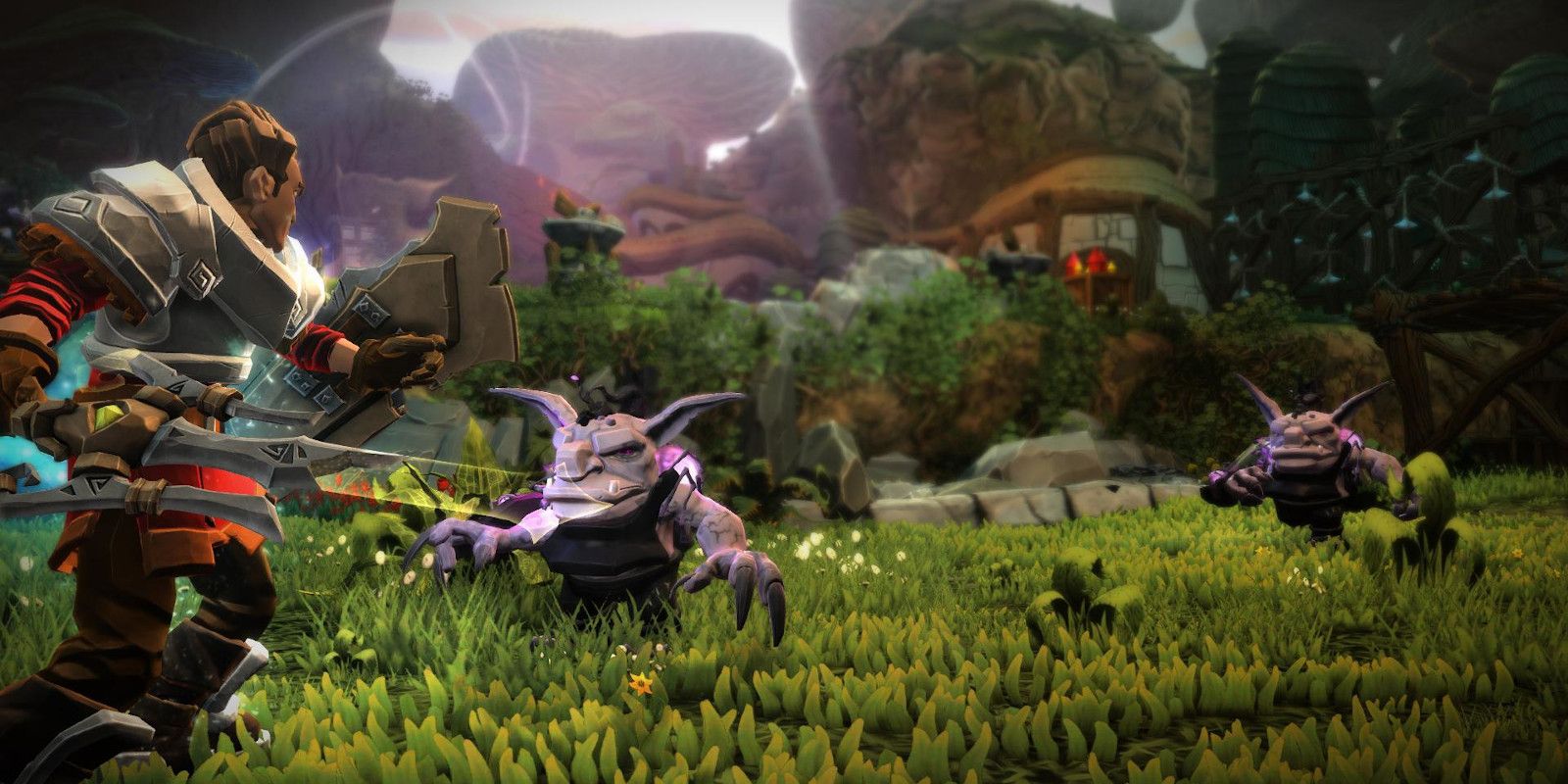Since its release in 2020, Media Molecule’s Dreams has maintained a small but passionate community of talented artists and game designers. The PlayStation exclusive game creation platform has slowly blossomed into one of the console’s best titles thanks to the efforts of both its developers and players. Before Dreams was even released, however, Microsoft published a similar game creation service titled Project Spark. Unfortunately, Project Spark struggled to attract an audience and shut down only a few years after its launch. Despite its short life, Project Spark played an important role in helping Dreams achieve its niche success.
Project Spark released in 2014 as a free-to-play title for Xbox One and Microsoft Windows. The service boasted a deep yet accessible game creation tool kit, allowing users to craft and share imaginative worlds and unique games with other players. During its beta and initial release, Project Spark impressed reviewers with its robust creation tools. Those who played it believed it had the potential to surpass similar video game titles like LittleBigPlanet and Roblox. Unfortunately, multiple poor decisions prevented the game from ever meeting these expectations, resulting in Project Spark being delisted from digital stores and having its servers shuttered in 2016.
Project Spark’s Potential Was Marred by Microtransactions
Project Spark‘s creation tools were incredibly versatile and accessible. Building and texturing landscapes was a short and simple process, and the game’s library of premade assets provided everything players needed to populate their worlds with people and places. Even more impressive was Project Spark‘s simplified alternative to coding, using a tile-based system known as Kode. While it took time and practice to fully understand, Kode allowed users with no prior coding experience to program AI, setup event triggers, and even implement in-game cutscenes. Fortunately, players who found Kode to be too complex could use Project Spark‘s premade templates for creating games of various genres and adding AI characters. No other game maker balanced simplicity and complexity like Project Spark. Its most talented users demonstrated this by making unique arcade-style games, which were remakes of familiar classics and cinematic short-films.
Along with user-made content, Project Spark included two episodic campaigns (one of which was a sequel to Conker‘s Bad Fur Day) and an RPG-style mode titled Crossroads. While the two campaigns were disappointingly short and never received proper conclusions, Crossroads provided users with an impressive showcase of what they could create with Project Spark. The mode generated a small open-world map for players to explore and complete various quests. While Crossroads’ bare-bones gameplay and repetitive missions didn’t do much to hold players’ interest, its decision to include mechanics like meaningful dialogue choices and a leveling system proved that Project Spark could be used to build RPGs and similarly complex games.
In theory, Project Spark should have been a guaranteed success. Its accessible creation tools were unmatched at the time of its release, and the initial positive reception painted a bright future for the title. Most of all, the game was free to download for both console and PC users. So what went wrong? There are numerous factors that can be blamed for Project Spark‘s sudden demise, including the Xbox One’s own mixed reception at launch. However, Project Spark‘s downfall was ultimately caused by the many ways it mishandled and kneecapped its own creative potential.
Like many other free-to-play games, Project Spark needed to be monetized in order for its developer, Team Dakota, to continue supporting the platform. Its solution was to lock creation tools and assets behind content packs that could be purchased with in-game credits. While credits could be earned by playing user-made games and completing daily missions, the process could also be sped up by paying for the Spark Premium subscription, which doubled the number of credits earned per activity. However, these microtransactions severely limited what creators could build in Project Spark, which chased away many potential players.
Project Spark‘s fundamental creation tools also suffered from numerous limitations. Players could edit premade assets or attach them to other items but lacked any options for creating original objects and characters. Furthermore, the only way to add custom animations and audio was through the Xbox One’s Kinect, which was only available to console players and often produced disappointing results. Compounded with the fact that most assets were locked behind a paywall, user-made games on Project Spark struggled to stand out and attract players due to the forced reliance on the small selection of assets.
These problems not only detracted from the user experience, but also had an unintended effect on Project Spark itself. With many of the creative tools locked behind paywalls, the platform was quickly flooded with low-effort and outright stolen creations. Even worse, Project Spark unwittingly encouraged this practice by rewarding users with credits for every upload. Additionally, Project Spark failed to incentivize users who put effort into working with the limited creation tools. Apart from a small subset of dedicated fans, most creators and players grew tired of Project Spark‘s rapidly declining quality, and they eventually abandoned the platform.
Shortly before its shutdown, Project Spark removed its microtransactions and released every content pack for free. For a brief time, users were able to utilize the creation tools to their full extent, revealing that the platform had an abundance of creative potential despite its fair share of limitations. Unfortunately, this was also a clear sign that Project Spark was rapidly approaching its end. Project Spark was far from perfect, but it delivered an immense degree of creative freedom and depth that most users were never able to experience until it was too late.
Dreams Prioritizes Creativity and Community
Dreams was first announced in 2013, the same year that Project Spark was unveiled at Xbox’s E3 presentation. However, Dreams’ extended development is reflected in the quality of the final product. Dreams is everything Project Spark promised to be and more. Its creation tools are far more versatile than its predecessor, allowing users to create larger, more complex games and even design custom assets. Furthermore, Media Molecule clearly recognized that users would want to create more than just games, and ensured that Dreams had categories dedicated to animations and artwork. Most importantly, Dreams gives users full access to its creative tools without ever charging for additional content.
In many ways, Dreams was designed with the clear intention of avoiding the mistakes that sunk Project Spark. Unlike its predecessor, Dreams launched as a full-price game. While this risked alienating potential users, it also helped Dreams maintain a consistently active userbase. Project Spark may have attracted more users at its launch since it was a free download, but its numerous restrictions and microtransactions prevented it from retaining players. In contrast, Dreams‘ entry fee ensured the game could be profitable while also allowing the developers to support the platform with free content updates. However, to avoid overwhelming players with the complexity of its creation tools, the game includes various templates and multiple in-game tutorials to help new players make their own creations.
Even with these improvements over Project Spark, Dreams could have easily followed the same fate without an incentive to keep users engaged. Project Spark‘s solution was to reward players with credits, though this evidently did more harm than good. However, rather than creating a specific reward, Dreams understood the importance of building a thriving community and showcasing their artistic contributions. Through categories dedicated to different genres and artistic mediums — as well as regularly hosted competitions, award shows and expos — Media Molecule has repeatedly brought users together and consistently encouraged their creativity. By prioritizing these elements that Project Spark lacked, Dreams has successfully evolved into a massive social platform for both experienced artists and aspiring creators.
Unfortunately, Media Molecule will end its live support for Dreams on September 1st, meaning the game won’t receive any more content updates or community events. It’s a huge blow to the platform, especially since these features have kept it active for the past few years. However, this doesn’t necessarily mean the end for Dreams. Unlike Project Spark, Dreams has survived purely on its community’s passion for creating and sharing their work. If Media Molecule upholds their promise to keep Dreams‘ servers online with bug-fixes and minor updates, its community can keep the game alive for years to come.



